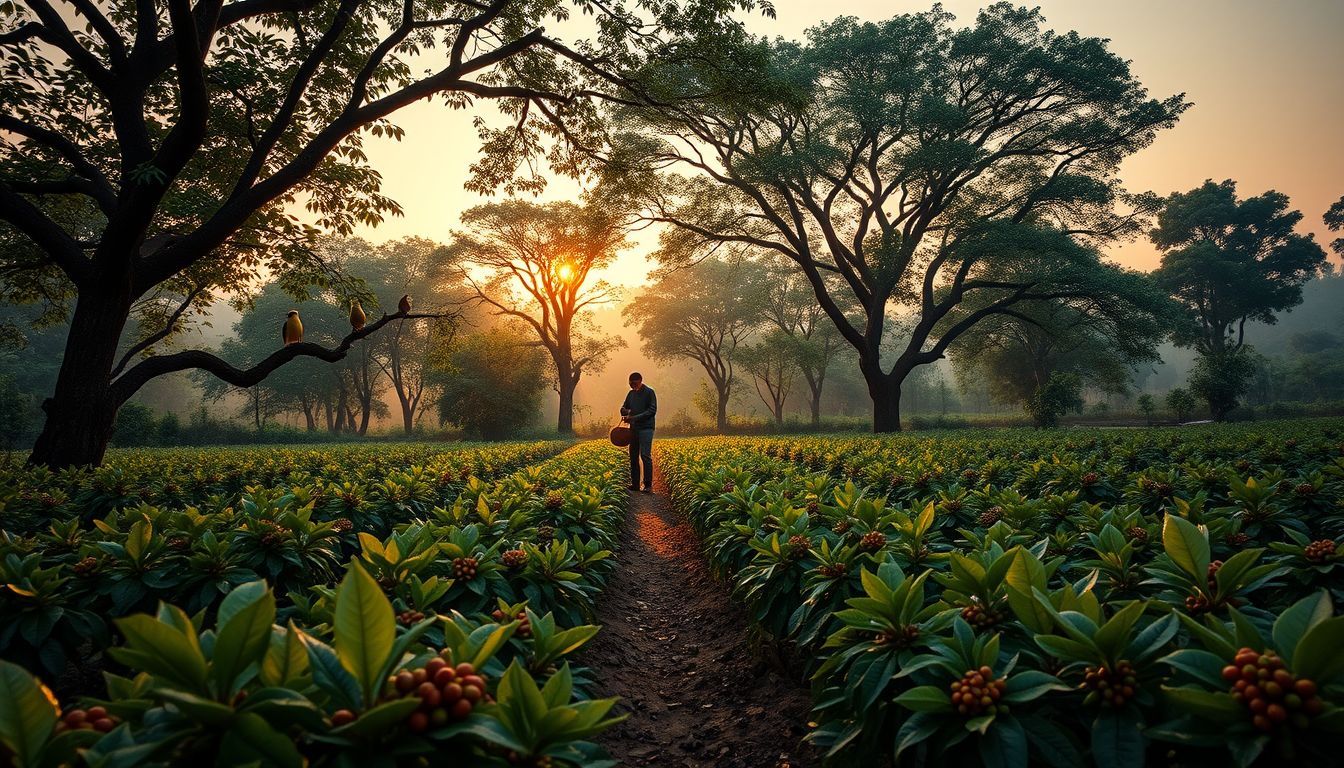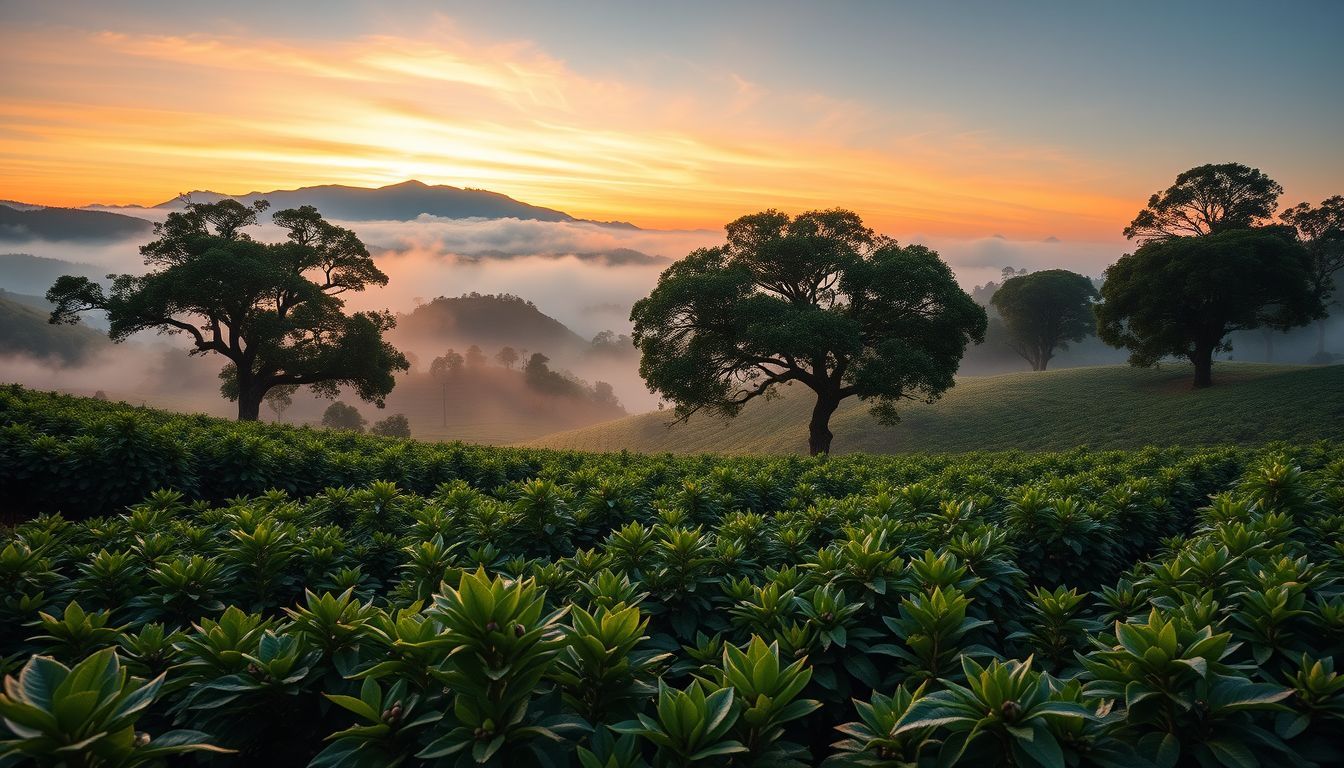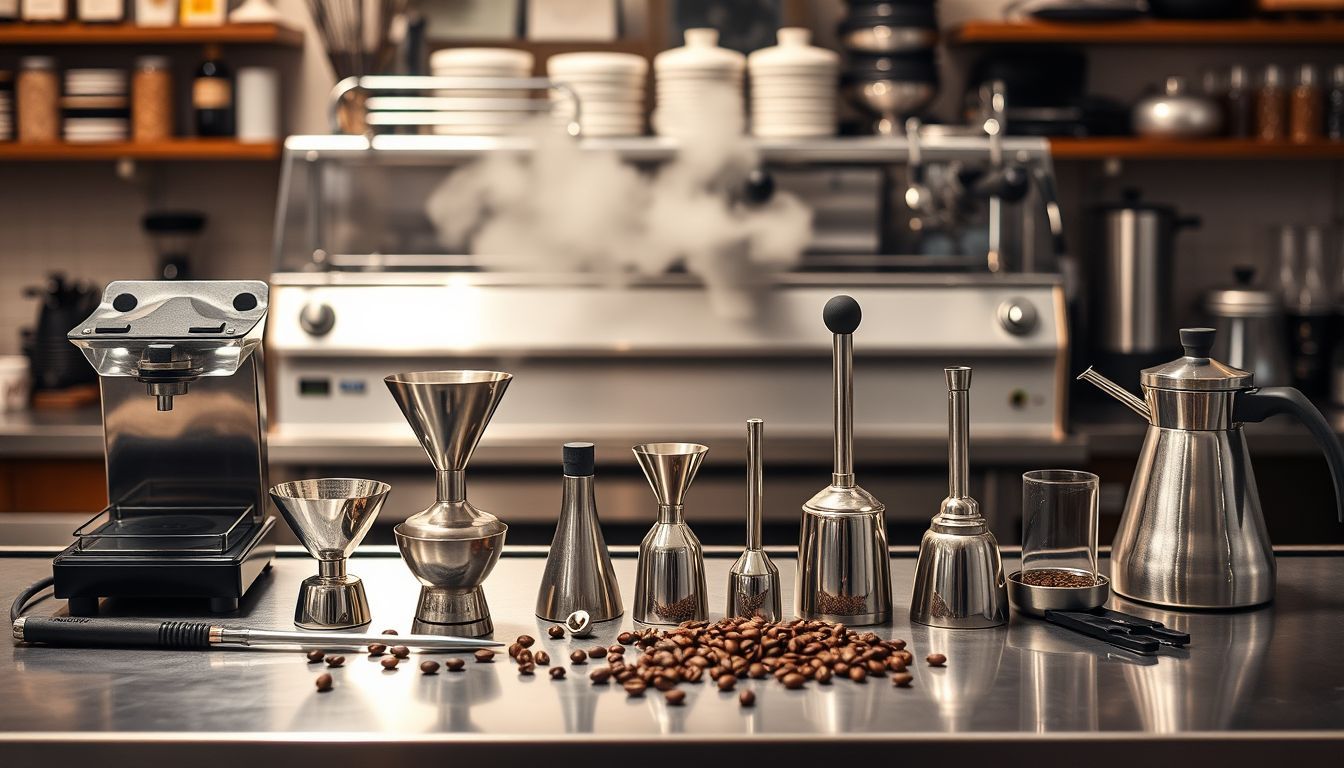The Evolution of Coffee Farm Sustainability Practices and Their Influence on Your Brew's Flavor
Explore how evolving sustainable practices in coffee farming—from shade-grown methods to regenerative agriculture—enhance biodiversity, soil health, and ultimately, the flavor profile of your daily brew.

Amazon Affiliate Disclosure
This post contains affiliate links. If you purchase through these links, we may earn a small commission at no additional cost to you.
The Evolution of Coffee Farm Sustainability Practices and Their Influence on Your Brew's Flavor
In the quiet dawn, as the first rays of sunlight kiss the dew-laden leaves, a transformation unfolds in the heart of coffee farms worldwide. This metamorphosis, rooted in sustainability, not only nurtures the earth but also enriches the very essence of the coffee we cherish. Let's embark on a contemplative journey through the evolving landscape of sustainable coffee farming and discover how these practices infuse depth and character into every cup.
The Roots of Sustainability: Shade-Grown Coffee
Embracing Nature's Canopy
In the beginning, coffee thrived under the protective embrace of towering trees, a practice known as shade-grown cultivation. This method, reminiscent of coffee's wild origins, fosters a harmonious ecosystem where biodiversity flourishes. Birds, insects, and myriad flora coalesce, creating a vibrant tapestry of life. The canopy moderates temperature fluctuations, allowing coffee cherries to ripen slowly, developing complex sugars and nuanced flavors. The result? A cup imbued with subtle acidity and layered notes, a testament to nature's patience.
A Decline and Resurgence
The mid-20th century saw a shift towards sun cultivation, driven by the pursuit of higher yields. However, this transition often led to deforestation, soil degradation, and a loss of biodiversity. Recognizing these repercussions, many farmers are returning to shade-grown methods, understanding that sustainability and quality are intertwined. This revival not only preserves ecosystems but also enhances the sensory profile of coffee, offering a richer, more balanced experience.
Regenerative Agriculture: Healing the Land
Beyond Sustainability
Regenerative agriculture transcends traditional sustainable practices by actively restoring and revitalizing the land. Techniques such as cover cropping, composting, and minimal tillage enhance soil fertility, sequester carbon, and promote water retention. In Brazil's Cerrado Mineiro region, farmers like Marcelo Montanari have embraced these methods, reducing chemical inputs and fostering resilience against climate variability. The outcome is a coffee that reflects the vitality of its environment, with pronounced sweetness and depth.
A Symphony of Soil and Flavor
Healthy soil is the foundation of exceptional coffee. The intricate web of microorganisms and nutrients within the earth imparts distinct characteristics to the beans. As farmers nurture the land, they cultivate a flavor profile that resonates with the terroir—a symphony of taste that echoes the care invested in the soil.
Water Conservation: The Essence of Purity
The Lifeblood of Coffee
Water, the lifeblood of coffee cultivation, demands judicious stewardship. Traditional processing methods often consume vast quantities of water, leading to resource depletion and pollution. Progressive farms are adopting eco-friendly techniques, such as water-efficient wet mills and solar dryers, to minimize their footprint. In Ethiopia, the Oromia Coffee Farmers Cooperative Union has implemented such practices, preserving water resources while enhancing coffee quality. This conscientious approach yields a cleaner cup, free from the taint of environmental neglect.
The Taste of Responsibility
When water is conserved and treated with respect, it translates into a purer, more authentic coffee experience. The absence of contaminants and the preservation of natural flavors allow the true character of the bean to shine, offering a taste that is both unadulterated and profound.
Community Empowerment: The Human Element
Cultivating Prosperity
Sustainability extends beyond the environment; it encompasses the well-being of the communities that cultivate our coffee. Cooperatives like COOPAIN Cabana in Peru exemplify this ethos by providing fair wages, education, and healthcare to their members. Such initiatives foster a sense of pride and dedication among farmers, who, in turn, invest greater care into their crops. This human touch imparts a warmth and authenticity to the coffee, a reflection of the hands that nurtured it.
A Flavor Enriched by Humanity
The stories and traditions of coffee-growing communities seep into the beans, adding layers of meaning and depth to the flavor. Each sip becomes a connection to the people and places behind the brew, enriching the experience with a sense of place and purpose.
Certifications: Seals of Integrity
Guiding the Conscious Consumer
Certifications like Rainforest Alliance and Fair Trade serve as beacons for consumers seeking ethically produced coffee. These seals ensure adherence to environmental and social standards, offering transparency and trust. For farmers, achieving certification often involves adopting sustainable practices that enhance both the land and the quality of their yield. The result is a coffee that not only tastes good but also feels good to drink, knowing it supports a greater good.
The Assurance of Quality
Certified coffees often exhibit superior quality, as the rigorous standards encourage meticulous cultivation and processing. This attention to detail translates into a cup that is not only flavorful but also ethically satisfying, providing a holistic enjoyment that transcends taste alone.
The Future: Innovations in Sustainability
Embracing Technology
The horizon of sustainable coffee farming is illuminated by technological advancements. Precision agriculture, utilizing data analytics and IoT devices, enables farmers to optimize resource use and monitor crop health with unprecedented accuracy. In Guatemala, Finca El Platanillo employs such innovations, achieving increased yields and reduced environmental impact. These forward-thinking practices promise a future where sustainability and productivity coexist, offering consumers coffee that is both exceptional and responsibly produced.
A Commitment to Continuous Improvement
The journey of sustainability is ongoing, with each step forward unveiling new possibilities for enhancing both the environment and the coffee it yields. As farmers and consumers alike commit to this path, the future of coffee looks not only sustainable but also more flavorful and enriching than ever before.
Conclusion: A Cup Filled with Purpose
As we cradle our mugs, inhaling the aromatic whispers of distant lands, it's profound to consider the journey each bean has undertaken. The evolution of sustainable practices in coffee farming is not merely an agricultural shift; it's a renaissance that honors the earth, empowers communities, and elevates the sensory experience of our daily brew. Each sip becomes a testament to the delicate balance between humanity and nature, a reminder that the choices we make ripple through the tapestry of life, influencing the very flavor of our existence.
---
Note: The insights and examples provided in this article are drawn from various sources, including reports on sustainable coffee farming practices and their impacts on flavor profiles.

Ben Carter
I spent the first part of my life learning the language of the wild—the rustle of leaves, the silence of snow, the resilience of a lone tree. In my writing, I try to translate that language, exploring how the landscapes around us shape the landscapes within us. My stories are quiet, but I hope they speak to a deeper part of you.


